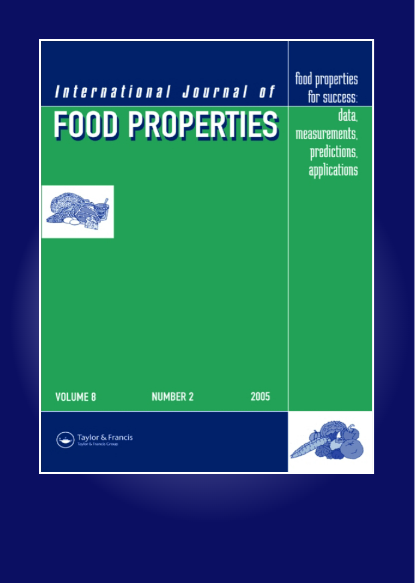A review on various extraction and detection methods of bio-functional components from microgreens: food applications and health properties
IF 3.9
3区 农林科学
Q2 FOOD SCIENCE & TECHNOLOGY
引用次数: 0
Abstract
The current review investigates the effects of microgreens on human health and their use in different food items. In recent decades, various extraction methods, such as cold pressing, supercritical CO2 extraction, microwave-assisted extraction, liquid and gas chromatography, hydro-distillation method, Soxhlet extraction, alcohol extraction, steam distillation, and accelerated solvent extraction have been used for extraction under optimal conditions. Microgreens contain essential bioactive compounds which work as functional foods because these microgreens are produced and cut down before ripening. Since these are the tiny cotyledons of different pulses, grains, and vegetable seeds, they possess different nutritional profile than whole one which contains essential fatty acids, in which major one is linoleic acid and functional compounds as important antioxidant enzymes like glucoraphanin which signals the antioxidants, glucosinolates, isothiocyanates, anthocyanins, ascorbate peroxidase, catalase, superoxide dismutase, and peroxidase which work against inflammation and oxidative stress and so work against chronic diseases like hypertension, cardiovascular diseases, diabetes, and cancer. Many clinical and experimental studies have indicated that microgreens of different species fenugreek, brassica, black mustard, mung beans, green peas, red cabbage, and broccoli can be used to reduce the risk of metabolic disorders, goiter, kidney diseases, and other chronic illnesses. This review focuses on different microgreen extraction techniques, their practical applications in the food industry, and their health properties.综述了微蔬菜中生物功能成分的各种提取和检测方法、食品应用及保健性质
本综述调查了微蔬菜对人体健康的影响及其在不同食品中的应用。近几十年来,各种提取方法,如冷压法、超临界CO2萃取法、微波辅助萃取法、液相和气相色谱法、水蒸馏法、索氏萃取法、醇萃取法、蒸汽蒸馏法、加速溶剂萃取法等,都被用于最佳条件下的提取。微型蔬菜含有必要的生物活性化合物,作为功能性食品,因为这些微型蔬菜是在成熟之前生产和砍伐的。由于这些是不同豆类,谷物和蔬菜种子的微小子叶,它们具有不同于含有必需脂肪酸的整个子叶的营养成分,其中主要是亚油酸和功能化合物,如重要的抗氧化酶,如葡萄糖苷,硫代葡萄糖苷,异硫氰酸酯,花青素,抗坏血酸过氧化物酶,过氧化氢酶,超氧化物歧化酶,过氧化物酶可以对抗炎症和氧化应激也可以对抗慢性疾病,比如高血压,心血管疾病,糖尿病和癌症。许多临床和实验研究表明,葫芦巴、芸苔、黑芥菜、绿豆、青豆、红卷心菜和西兰花等不同种类的微蔬菜可以用来降低代谢紊乱、甲状腺肿、肾脏疾病和其他慢性疾病的风险。本文综述了不同的微绿提取技术及其在食品工业中的实际应用,以及它们的保健特性。
本文章由计算机程序翻译,如有差异,请以英文原文为准。
求助全文
约1分钟内获得全文
求助全文
来源期刊

International Journal of Food Properties
工程技术-食品科技
CiteScore
5.20
自引率
3.40%
发文量
167
审稿时长
4.3 months
期刊介绍:
The International Journal of Food Properties publishes original research papers devoted to all scientific and applied aspects of food properties. The emphasis is on measurement methods, development of standards, and data on food properties, predictions, and applications.
The International Journal of Food Properties brings together the widely scattered research in the area of food properties and provides an international forum for scientists and technologists for rapid dissemination of their research results, ideas, and knowledge. Other features include review articles, book reviews, letters to the editor, conference papers, news, and commercial advertisements.
 求助内容:
求助内容: 应助结果提醒方式:
应助结果提醒方式:


